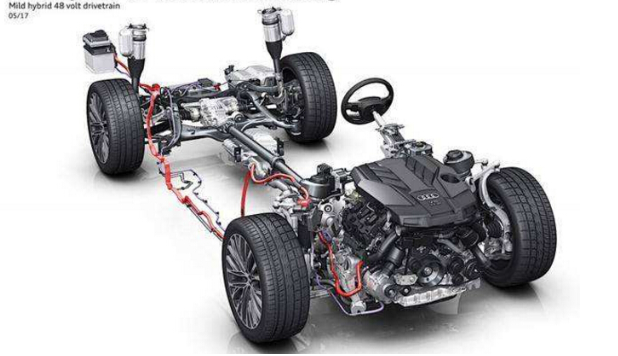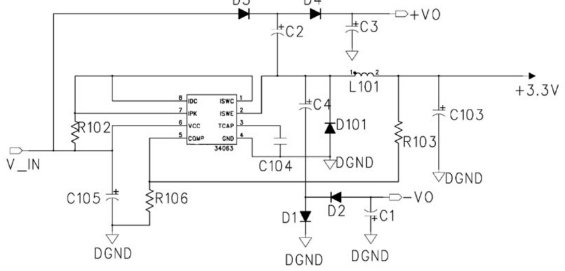Position:Home » Technical Articles
Resistors Applied to 48V Automobile System
Writer:Microhm Page View:Date:2019-03-27
The 48V automotive system is an important development direction in the development of automotive electronics at present. There is great difference between the 48V voltage and the previous 12V automotive system. The resistor is used as the common electronic component in the daily automobile electronics. It plays a all-important role in the design of 48V automotive electronic system, and the use of resistors in DC-DC battery power supply is very important.

This problem, coupled with the emergence of electric vehicles and self-driving systems, poses a challenge to the power transmission specification, and the automotive industry will then turn to 48V battery power as a solution. Compared with 12V electrical system, 48V electrical system can reduce the distribution loss and improve the overall efficiency when the power demand is very high. All these are closely related to the resistors in the DC-DC power supply.
In a 48V system, the challenge of a resistor application in a DC-to-DC converter is that it is necessary to maintain a conversion efficiency, a size, and a low EMI similar to that of a 12V system, which makes it more difficult to meet these specifications. The benefits resulting from the use of a 48 V battery power supply should not be lost during the DC/ DC conversion process and can operate at a 2 MHz frequency to avoid interfering with the monolithic switching regulator of the AM frequency band, which is well suited for 48V automotive electrical systems.

The monolithic device uses MOSFET driver design, can produce fast, clean switch edge. This enables high efficiency, even in high-frequency operations. In addition, innovative drives minimize overshoot and suppress ringing, which will be a source of EMI generation when other drives are introduced. The integrated compensation circuit and bypass capacitor minimize the overall solution size and simplify the low EMI layout.
When the output is less than 3.1 V, the BIAS pin should be connected to an external power supply higher than 3.1 V to improve efficiency. If there are no resistors applied to this kind power supply circuit, it will not available. Then BIAS pin should be connected to the GND. In many cases, a 1MHz1.8V/8A solution works properly in 65V input transients, with the exception of low EMI, high efficiency at high frequency and a wide input voltage range. The characteristics of the circuit also include ultra-low static current and low-voltage difference.
Keywords:resistors
Latest News
- Resistor's role in measuring and correcting LED,,,
- Single through-hole resistors' characteristics ,,,
- Why shunt resistors for current sense applicati,,,
- Metal-film resistors with small size, high resi,,,
- 36W High-Current Shunt Resistors MMS8420,,,
- 1W Surface Mount Resistor MPR1206,,,
- An Overview of Microhm Electronics' Resistor Pr,,,
- More anti-sulfur resistors used in harsh envir,,,
- Resistance changes with temperature,,,
- 140W TO247 High Power Heatsinkable Resistor,,,
- MMS5930 is ideal for current sensing in industr,,,
- Shunt resistors selection for engineers' design,,,
- Considerations for choosing precision resistors,,,
- Ceramic Encased Cement Resistors NWH Series for,,,
- Resistors for Passive Balancing in Battery-Pow,,,
Hot Articles
- Microhm will take part in 10th Automotive World,,,
- Thanks for Visiting Microhm's Booth E5-5706 in ,,,
- Resistors in Short Supply: Blame Cars,,,
- New lunch: High Power Precision Shunt Resistor,,,,
- How to Test a Resistor,,,
- Innovative Technology, Future Electric: Electri,,,
- What is Precision Resistors?,,,
- SMD Resistors Sizes and Packages,,,
- The Construction and Features of Metal Film Res,,,
- What is a TO-220 Resisor?,,,
- Hot Selling Products: Precision Shunt Resistors,,,
- How to Calculate the Equivalent Resistance Valu,,,
- What is a Fixed Resistor?,,,
- Resistors in LED Circuits,,,
- Resistors Types and Materials Overview,,,
Resistance applications
- Industrial Roberts Applied to Solar Photovoltai,,,
- The Four Important Functions of Alloy Resistors,,,
- The Measurement Accuracy of Automotive Shunt is,,,
- Surface Mount Resistor's Size and Package ,,,
- The Main Application for High Precision and Low,,,
- BMS for New Energy Vehicle,,,
- Miniature future for passive electronic compone,,,
- Shunt Resistor MMS8420 for High Current Stable ,,,
- Heater Blower Motor Resistor in Air Conditioner,,,
- Precision Resistors' Construction and TCR,,,
- Why Zero-Ohm Resistors?,,,
- Select the Right Resistor for Harmonic Filterin,,,
- Urbanization Development Bringing the Transform,,,
- Carbon Film Resistors' Features and Application,,,
- Difference Between High Precision Resistors and,,,
